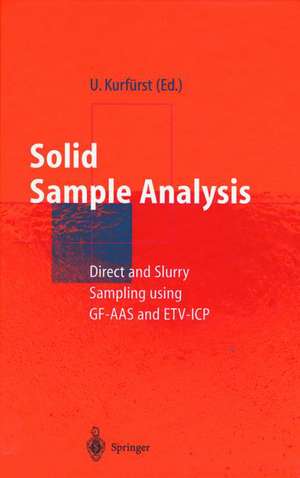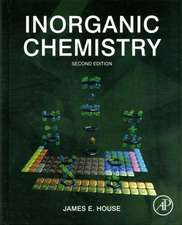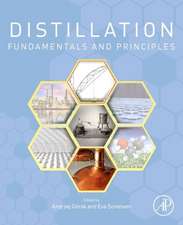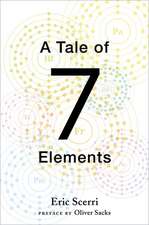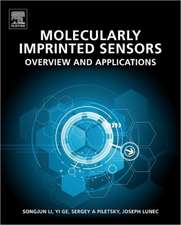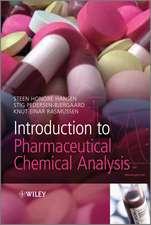Solid Sample Analysis: Direct and Slurry Sampling using GF-AAS and ETV-ICP
Editat de Ulrich Kurfürsten Limba Engleză Hardback – 17 mar 1998
| Toate formatele și edițiile | Preț | Express |
|---|---|---|
| Paperback (1) | 1659.51 lei 6-8 săpt. | |
| Springer Berlin, Heidelberg – 21 sep 2011 | 1659.51 lei 6-8 săpt. | |
| Hardback (1) | 1230.35 lei 6-8 săpt. | |
| Springer Berlin, Heidelberg – 17 mar 1998 | 1230.35 lei 6-8 săpt. |
Preț: 1230.35 lei
Preț vechi: 1500.42 lei
-18% Nou
Puncte Express: 1846
Preț estimativ în valută:
235.42€ • 246.46$ • 194.80£
235.42€ • 246.46$ • 194.80£
Carte tipărită la comandă
Livrare economică 07-21 aprilie
Preluare comenzi: 021 569.72.76
Specificații
ISBN-13: 9783540624707
ISBN-10: 3540624708
Pagini: 452
Ilustrații: XIX, 427 p. 49 illus.
Dimensiuni: 155 x 235 x 30 mm
Greutate: 0.81 kg
Ediția:1998
Editura: Springer Berlin, Heidelberg
Colecția Springer
Locul publicării:Berlin, Heidelberg, Germany
ISBN-10: 3540624708
Pagini: 452
Ilustrații: XIX, 427 p. 49 illus.
Dimensiuni: 155 x 235 x 30 mm
Greutate: 0.81 kg
Ediția:1998
Editura: Springer Berlin, Heidelberg
Colecția Springer
Locul publicării:Berlin, Heidelberg, Germany
Public țintă
ResearchDescriere
The analysis of solid materials by introducing solid test sampies directly into the graphite furnace of an atomic absorption spectrometer must be regarded as a powerful analytical approach. Even if it is - of course - not the "ultimate method". After three decades of development, the instrumentation and the methodology are available to apply solid sampling successfully for the analysis of almost every material. Moreover, several tasks cannot be solved using other analytical methods as neatly as they can using direct solid sampling. The conventional methods work more or less satisfactorily, so why do we sug gest applying solid sampling much more extensively than it is today? To begin with, the features pointed out time and again should be named: Rapidity of the analytical procedure, low susceptibility to analyte loss or contamination, very smallquantities can be analyzed, and expenditure on instrumentation and per sonell is also low. These properties are examined and the necessary conditions are discussed (Chapter 1) as are the analytical tasks (Chapter 6) for which use of this method is advantageous. Other features that are often overlooked are just as important: The simplicity of the analytical procedures allows the analyst to main tain an intimate relationship with the original scientific task that has to be solved with the analysis. Furthermore, the considerable reduction of working place haz ards and pollution by avoiding the use of chemical reagents must nowadays be assessed as a feature as important as the others.
Cuprins
1 Characteristics of Solid Sampling Using the Graphite Furnace.- 2 General Aspects of the Graphite Furnace Solid Sampling Method.- 3 Direct Solid Sampling with Graphite Furnace Atomic Absorption Spectrometry (GF-AAS).- 4 Solid Sampling by Electrothermal Vaporization-Inductively Coupled Plasma-Atomic Emission and -Mass Spectrometry (ETV-ICP-AES/-MS).- 5 Introduction of Slurry Samples into the Graphite Furnace.- 6 Advantageous Fields of Application for Solid Sampling Analysis.- References.
Textul de pe ultima copertă
The direct determination of elements in solid samples by atomspectrometric methods without prior digestion is in many cases more efficient and reliable, faster, easier, more cost-effective and less time-consuming than other methods. In this first book on the topic the authors describe concisely all instrumental and methodological features, including calibration, influences from the matrix or sample inhomogeneities, optimisation, data analysis and measurement uncertainty. Special chapters deal with ET-AAS, slurry injection, ETV-ICP-AE/MS coupling. The authors' aim to deliver all their experience in a way that enables the spectroscopist to develop their own solid sampling based methods makes this book an unvaluable source for AAS- and AES-practitioners.
Caracteristici
Written by an experienced practitioner for practitioners; book gives insight into the methodological and instrumental details enabling the practitioners to develop their own methods; extended chapters on qualitiy control and measurement uncertainty according to ISO.
